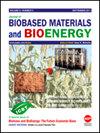Dynamic Characteristics of Rhizosphere Bacteria Communities During Different Growth Stages of Strawberry
IF 0.5
4区 医学
引用次数: 0
Abstract
The rhizosphere, directly influenced by root systems of plant, plays a significant role in plant-microbe interactions, which in turn directly affect the plants. In this work, the dynamic characteristics of rhizosphere bacterial communities during the growth period of cultivated strawberry (Fragaria×ananassa ‘Hongyan’) were investigated, and the dominant bacterial species in different growth stages were identified. High-throughput sequencing (HTS) was employed to obtain operational taxonomic unit (OTU) abundance, bacterial community diversity, and abundance of rhizosphere bacteria at five growth stages of strawberry: growth period (A1.1), budding period (A2.2), flowering period (AB3.2), fruiting period (AB4.1) and mature fruit period (AB5.2). The composition and abundance of bacterial communities structure were analyzed using the unweighted pair group method with arithmetic means (UPGMA) cluster analysis. The result indicated that, in the flowering stage the bacterial community exhibited the highest diversity and richness, while the bud stage had the least. The flowering stage showed a greater specific bacteria species in the strawberry rhizosphere, followed by growth, mature and harvest stages, and the lowest in the bud stage. The main dominant phyla were Actinobacteria, Proteobacteria and Acidobacteria, accounting for over 70% of the total bacterial abundance. The main dominant genera were Alcanivorax, Kaistobacter, Marinobacter and Candidatus Nitrososphaera. The bacterial abundance similarity was relatively high in the growth and harvest stages, as well as in flowering and mature stages, while it differed greatly from that of the bud stage. In conclusion, the difference in bacterial diversity between bud stage and flowering stage was the greatest, with the Chao1 index and Shannon index increased by 79.35 and 6.74%, respectively. The rhizosphere bacterial community richness and diversity were highest at the flowering stage (AB3.2), with 198 specific OTUs accounting for 7.48% of the total OTUs. At the phylum level, the bacterial abundance of Proteobacteria, Acidobacteria and Actinobacteria were greatly affected by the developmental stage. These findings suggest that the bacterial diversity of strawberry rhizosphere will change with the growth stage.草莓不同生育期根际细菌群落动态特征
根际直接受植物根系的影响,在植物与微生物的相互作用中发挥着重要作用,而植物与微生物之间的相互作用又直接影响着植物。本研究对栽培草莓(Fragaria×ananassa‘Hongyan’)生长期根际细菌群落的动态特征进行了研究,确定了不同生长阶段的优势菌种。采用高通量测序法(HTS)获得了草莓生长期(A1.1)、出芽期(A2.2)、开花期(AB3.2)五个生长阶段的操作分类单元(OTU)丰度、细菌群落多样性和根际细菌丰度,结果期(AB4.1)和成熟果期(AB5.2)。采用算术平均未加权对群法(UPGMA)聚类分析细菌群落结构的组成和丰度。结果表明,开花期细菌群落多样性和丰富度最高,芽期细菌群落最少。开花期草莓根际的特定细菌种类较多,其次是生长期、成熟期和收获期,芽期最低。主要优势菌门为放线菌门、变形菌门和不动杆菌门,占细菌总数的70%以上。主要优势属为Alcanivorax属、Kaistobacter属、Marinobacter属和Candidatus Nitrosospeera属。细菌丰度相似性在生长和收获阶段以及开花和成熟阶段相对较高,而与芽期差异很大。综上所述,芽期和开花期细菌多样性差异最大,Chao1指数和Shannon指数分别提高了79.35%和6.74%。根际细菌群落丰富度和多样性在开花期最高(AB3.2),198个特定OTU占总OTU的7.48%。在门的层面上,变形杆菌、不动杆菌和放线菌的细菌丰度受发育阶段的影响很大。这些发现表明,草莓根际细菌多样性会随着生长阶段的变化而变化。
本文章由计算机程序翻译,如有差异,请以英文原文为准。
求助全文
约1分钟内获得全文
求助全文

 求助内容:
求助内容: 应助结果提醒方式:
应助结果提醒方式:


